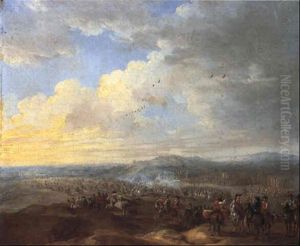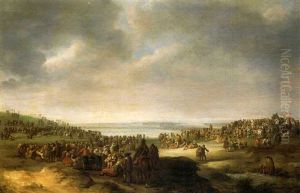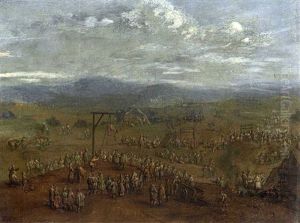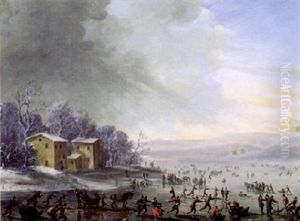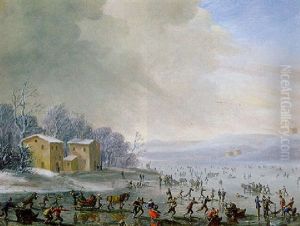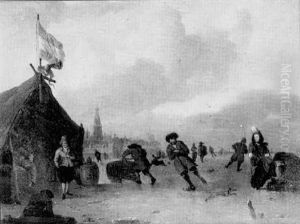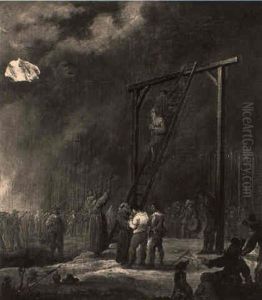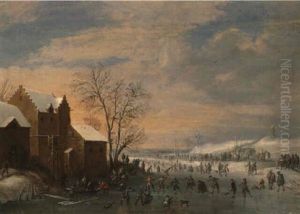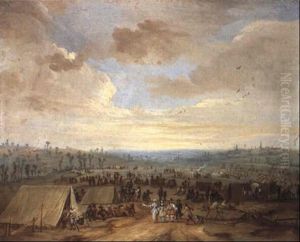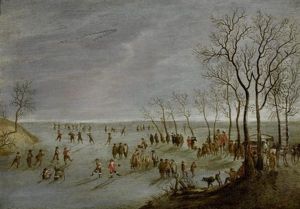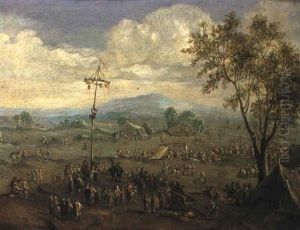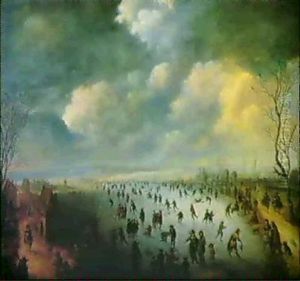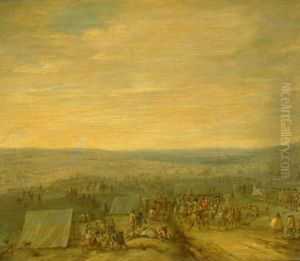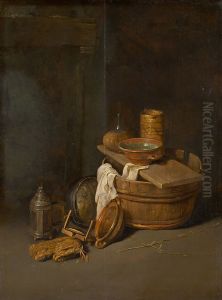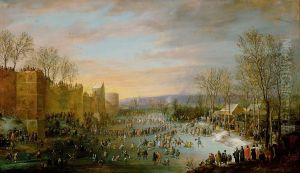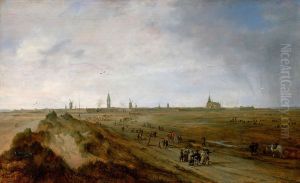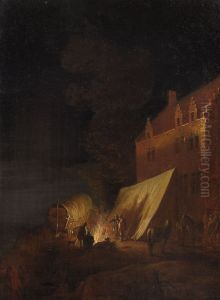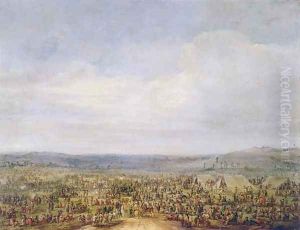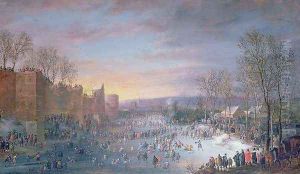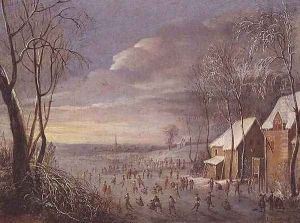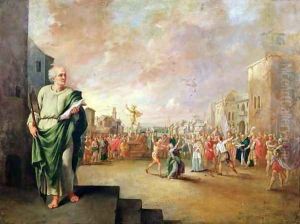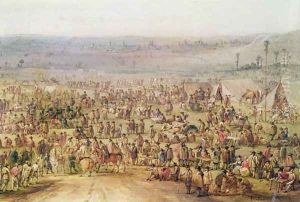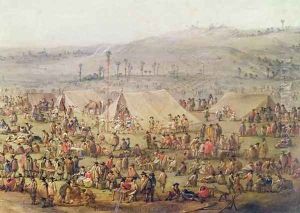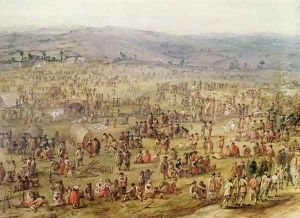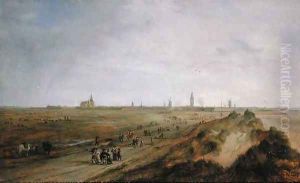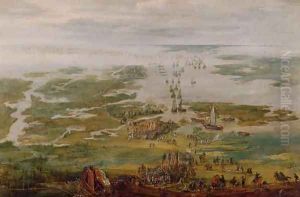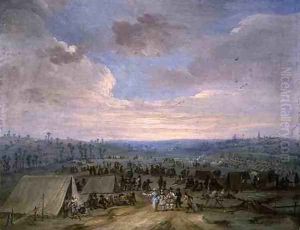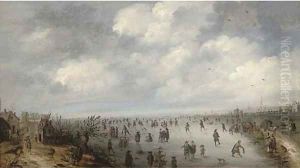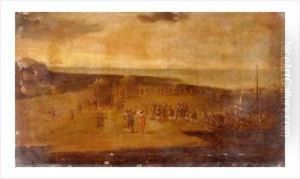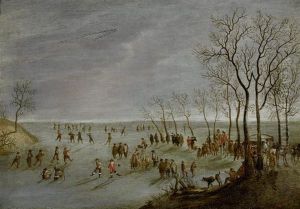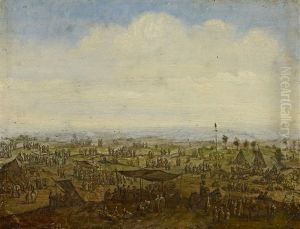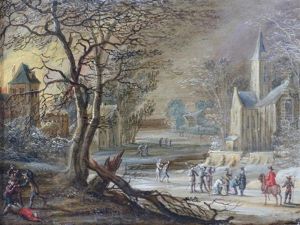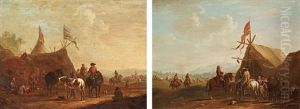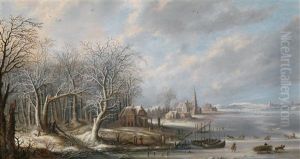Robert van den Hoecke Paintings
Robert van den Hoecke was a Flemish painter and engraver born in Antwerp in 1622. He was part of the prominent van den Hoecke family of artists, which included his father Gaspar van den Hoecke, a well-regarded painter himself, and his brother Jan van den Hoecke, who was also a successful painter. Robert's artistic lineage provided a fertile ground for his development as an artist, embedding him deeply within the rich artistic culture of the Flemish Baroque period.
Van den Hoecke's work was primarily focused on landscapes, battle scenes, and architectural pieces. His landscapes often depicted serene, pastoral scenes that contrasted sharply with the tumultuous battle scenes he was also known for. These battle scenes captured the chaos and fervor of conflict, a subject that was popular among patrons of the time. His architectural works reflected a keen eye for detail and perspective, showcasing not only his technical skill but also his appreciation for the beauty of structure.
Throughout his career, Robert van den Hoecke enjoyed the patronage of prominent figures of his time, which allowed him to work on a variety of projects, from private commissions to more public works. His talent in engraving also earned him recognition, making him a versatile artist who could express his artistic vision across different mediums.
Despite his contributions to the Flemish Baroque movement, Robert van den Hoecke's work has not received the same level of attention as some of his contemporaries. However, his paintings and engravings continue to be studied and appreciated for their contribution to the era's artistic achievements. Van den Hoecke's ability to capture the essence of his subjects, whether peaceful landscapes or dynamic battle scenes, demonstrates his mastery of mood and atmosphere, making him a significant, if under-recognized, figure in the world of Flemish art.
Robert van den Hoecke passed away in 1668, leaving behind a body of work that continues to be admired for its beauty and technical proficiency. His legacy, while perhaps not as widely celebrated as that of some of his peers, remains an important part of Flemish Baroque art history.
